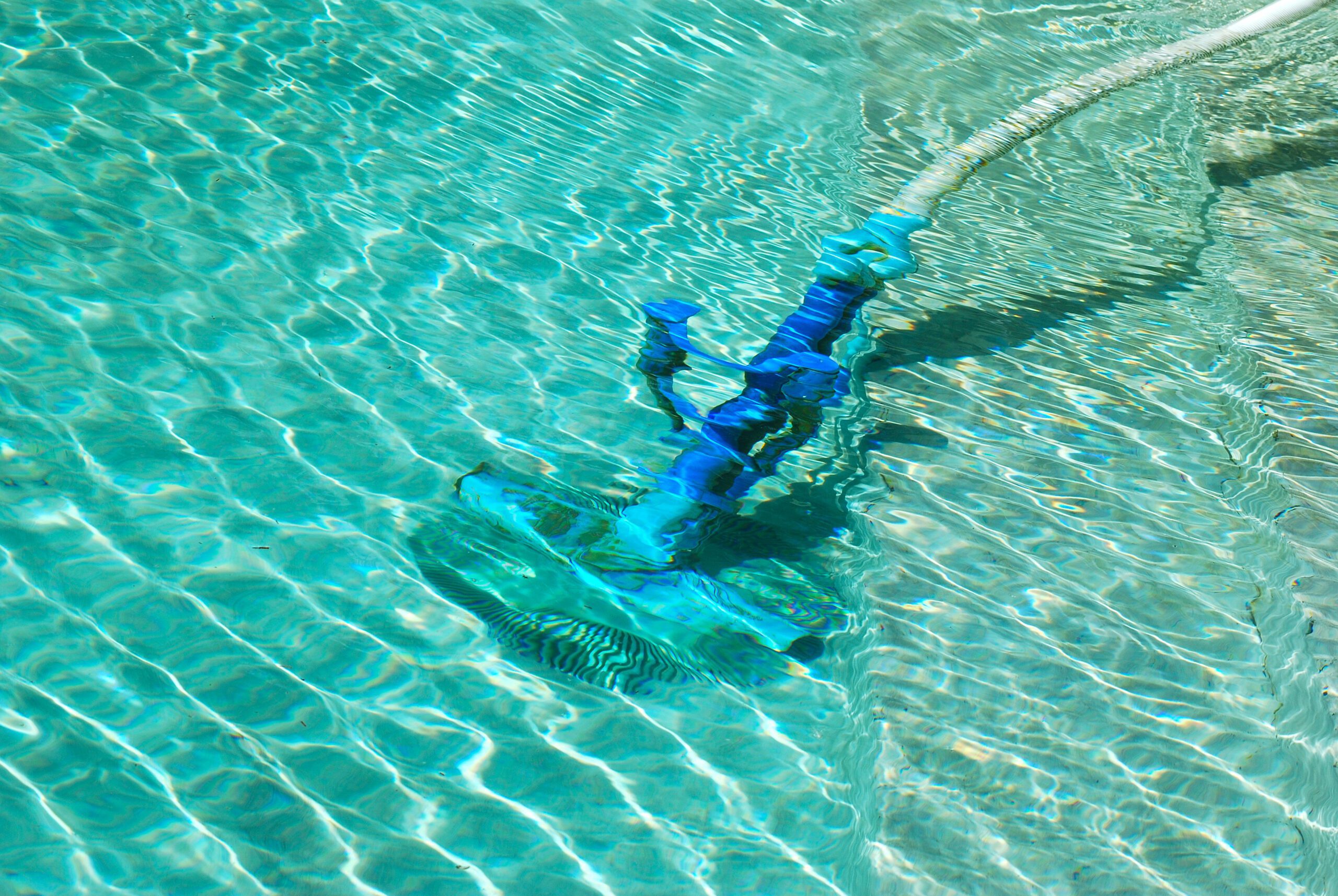
Want to learn more about algaecide? Read on to find out when to add algaecide to your pool maintenance routine and other helpful tips.
Vacuuming your swimming pool is one of the most tedious tasks you must perform as a pool owner. If you are using a manual vacuum it is a lot of hard work and also is incredibly annoying to do. Luckily for you, Pool Calculator has you covered on how to do it yourself! Today we are going to be running through a simple process of how to vacuum a swimming pool manually. We will be detailing what you need for the job and giving you step-by-step instructions on how to do the job in the easiest, yet most efficient way.
Click here for a buyers guide on swimming pool vacuum cleaners!

When it comes to vacuuming your pool manually there are three simple steps to a successful cleaning. We will be walking through each of the following; priming your vacuum, connecting to your pump, and finally, vacuuming your pool.
The most important thing to do when preparing your vacuum for its job is to get rid of the air in the vacuum cleaner. This is key because if there is leftover air left inside the vacuum will lose suction. This lost suction will result in a less effective clean and more time spent cleaning than necessary. Also, priming the vacuum will allow the system to work for longer and prevent any further problems down the road.
Priming your vacuum cleaner is a simple process. You simply attach the vacuum head to your telescoping pole and lower the cleaner to the bottom of the pool. Then, you push the end of the hose of the vacuum against a jet and allow all of the air to be pushed out. You will know this is working from air bubbles rising to the surface above the vacuum.
Once the air bubbles have all been released from your vacuum and it is properly primed, it’s time to hook your vacuum up for actual use.
The way a pool vacuum works is through your pool pump. The suction of your pool pump powers the vacuum and allows you to suck up the debris you’re targeting. This is a simple, and straight-forward process.
All you need to do is connect the open end of your vacuum hose to the inlet of the pool pump. However, before you do this you will want to remove the strainer basket from your pump. This will allow the suction to suck up the dirt from your pool.
Once this is done you will simply need to plug the open hose of your vacuum into the port at the bottom of the skimmer. This will connect you to the pump. Now you are actually ready to vacuum your swimming pool.
Now that all the preparation is out of the way, you can simply vacuum your pool. There is no special trick here. Simply run your vacuum along the bottom surface of your pool until it is up to your level of cleanliness. If you made sure your vacuum hose is long enough you should have no problems reaching the full length of your pool.
The only problem we see occurring in this step is if by chance you lose suction. With a lost suction we recommend checking the connection of your vacuum to the pump. If you cannot find the issue, simply retrace your steps and try again to recapture that suction you once had.
As you can see, vacuuming your pool manually is a relatively straight-forward pool chore. This process may lead to some hard work for you, but it will also save you a lot of money as opposed to hiring a “pool specialist” to come out and clean for you.
For a deep dive on robotic swimming pool cleaners, click here!

Want to learn more about algaecide? Read on to find out when to add algaecide to your pool maintenance routine and other helpful tips.

In this quick guide, we’ll answer the question “can you over shock a pool” and unveil the factors to consider when shocking a pool.

Maintaining both pH and total alkalinity in your swimming pool is important for keeping your pool properly sanitized and non-corrosive. Total alkalinity is to pH what cyanuric acid is to free chlorine. Total alkalinity stabilizes pH levels. The ideal pool pH level is 7.4 to 7.6. The ideal total alkalinity level is 80 to 120 ppm.

The Association of Pool and Spa Professionals recommends free chlorine levels for both swimming pools and hot tubs be kept between 2.0 and 4.0 ppm. However, the Center for Disease Control recommends free chlorine stay above 1 ppm in pools and 3 ppm in hot tubs.